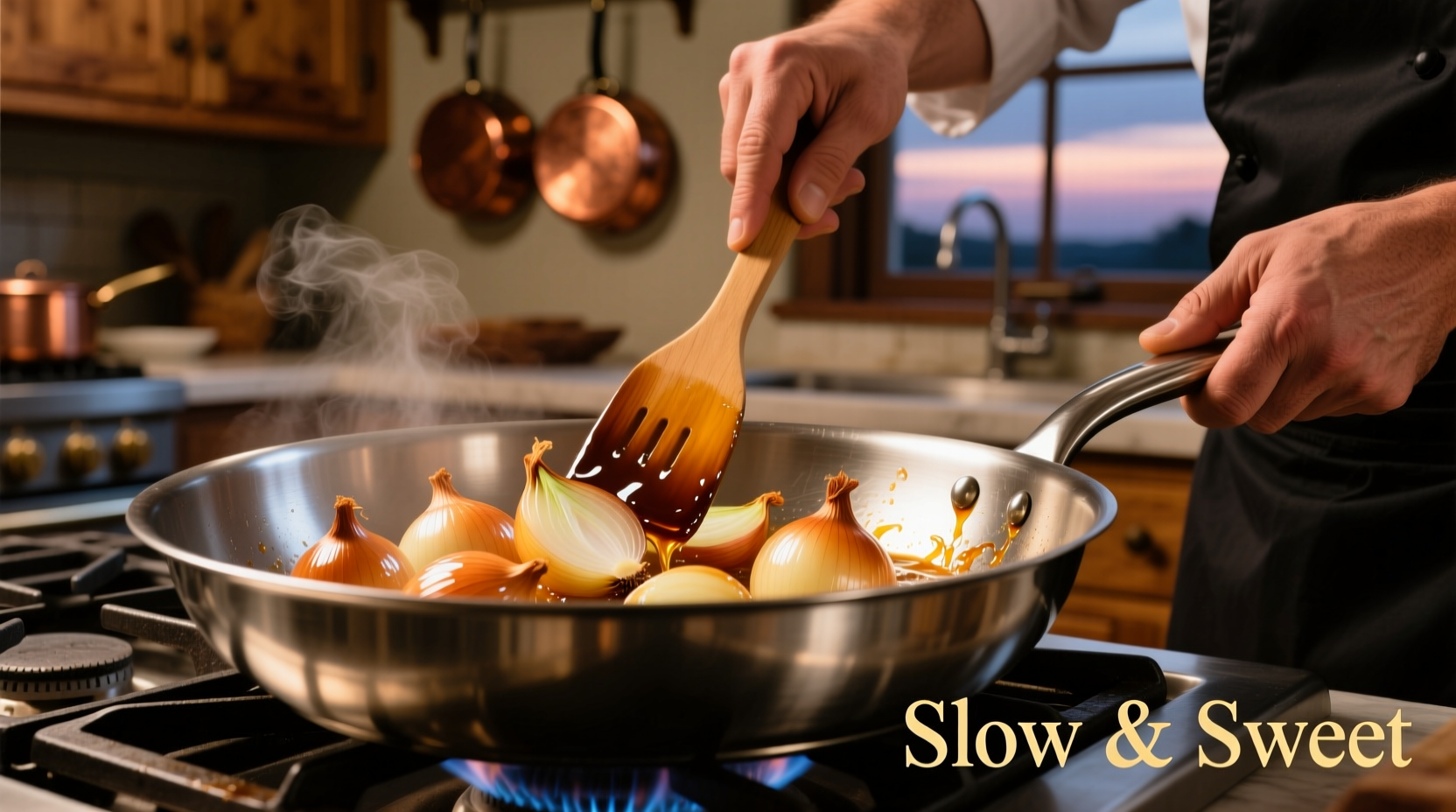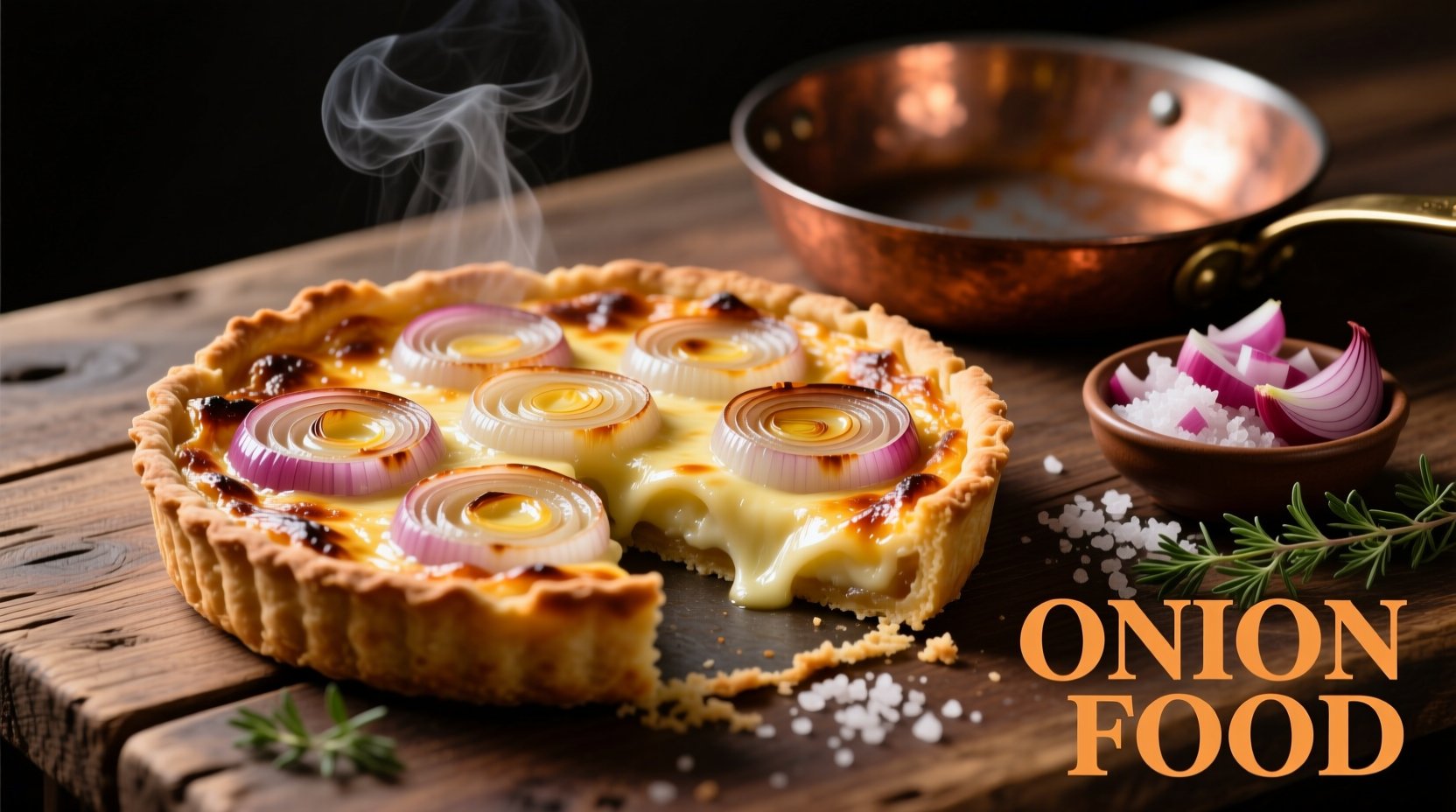Onion food encompasses any culinary preparation where onions serve as a primary ingredient or foundational flavor component. These versatile alliums contain natural sugars and sulfur compounds that create complex flavor profiles when cooked properly. Understanding how to select, prepare, and cook with different onion varieties transforms ordinary dishes into extraordinary culinary experiences.
Why Onions Are Culinary Essentials
Professional chefs consider onions the "trinity" of flavor development alongside carrots and celery. The American Chemical Society confirms that onions contain over 100 different sulfur compounds that create their distinctive taste and aroma when cut or cooked. These compounds transform during cooking, developing sweet, savory, and umami notes that form the backbone of countless dishes worldwide.
| Onion Variety | Flavor Profile | Best Culinary Uses | Storage Duration |
|---|---|---|---|
| Yellow Onions | Strong, pungent when raw; sweet when cooked | Caramelizing, soups, stews, roasts | 2-3 months |
| Red Onions | Sharp, mildly sweet | Salsas, salads, pickling, grilling | 3-4 weeks |
| White Onions | Crisp, sharp, slightly spicy | Mexican cuisine, guacamole, stir-fries | 1-2 months |
| Shallots | Delicate, subtle garlic notes | Vinaigrettes, sauces, delicate dishes | 1 month |
| Green Onions | Mild, fresh, grassy | Garnishes, Asian dishes, potato salad | 1 week |
Mastering Onion Preparation Techniques
Proper preparation makes the difference between harsh, bitter onions and sweet, complex flavor foundations. Follow these professional chef techniques for perfect results every time:
The Science of Onion Cutting
When you cut an onion, you rupture cells containing enzymes that react with sulfur compounds to create that characteristic pungency. The USDA recommends chilling onions for 30 minutes before cutting to reduce this reaction by slowing enzyme activity. Always use a sharp knife to minimize cell damage and reduce tear-inducing compounds.
Essential Cooking Methods
Understanding how heat transforms onions is crucial for developing professional-level flavors:
- Sweating (10-15 minutes): Cook diced onions over medium-low heat with a lid to draw out moisture without browning. Creates a mild, sweet base for sauces and soups.
- Sautéing (5-8 minutes): Cook over medium heat with oil until translucent. Ideal for stir-fries and quick dishes.
- Caramelizing (30-45 minutes): Slow cooking over low heat until deep golden brown. Develops complex sweetness through the Maillard reaction and sugar caramelization.
- Roasting (25-35 minutes): Whole or halved onions roasted at 400°F (200°C) develop concentrated sweetness.

When to Use Different Onion Varieties
Not all onions work equally well in every application. Understanding context boundaries prevents culinary disasters:
- Use yellow onions for French onion soup and beef stew—they develop the deepest sweetness when cooked slowly
- Substitute white onions in Mexican dishes where their sharper flavor complements lime and cilantro
- Avoid red onions in long-cooked dishes—they lose color and become unpleasantly sour
- Reserve shallots for vinaigrettes and delicate sauces where their subtle garlic notes enhance without overwhelming
- Green onions work best added at the end of cooking to preserve their fresh flavor
Onion Timeline: From Ancient Staple to Culinary Essential
Onions have shaped human culinary history for millennia. According to archaeological evidence from the University of Copenhagen, onions were cultivated as early as 5000 BCE in Iran and West Pakistan. The timeline of onion food evolution reveals fascinating culinary developments:
- 5000 BCE: Earliest onion cultivation in Bronze Age settlements
- 3200 BCE: Onions featured in Egyptian paintings and buried with pharaohs
- 1st Century CE: Roman agricultural writer Columella documents multiple onion varieties
- 1500s: European explorers introduce onions to the Americas
- 1800s: Industrial refrigeration enables year-round onion availability
- 1930s: Development of sweet onion varieties like Vidalia
- Present: Onions feature in approximately 83% of savory recipes worldwide
Practical Applications: Transforming Your Cooking
Apply these professional techniques to elevate everyday dishes:
Building Flavor Foundations
Start most savory dishes by sweating onions with a pinch of salt, which draws out moisture and prevents burning. The International Association of Culinary Professionals recommends adding onions to cold oil rather than hot—this gradual heating develops deeper flavor without scorching.
Perfect Caramelized Onions
For restaurant-quality caramelized onions:
- Use yellow onions sliced uniformly 1/8 inch thick
- Cook over medium-low heat with 1 tablespoon oil and 1 teaspoon butter
- Add 1/4 teaspoon baking soda to lower pH and accelerate browning
- Cook 35-45 minutes, stirring occasionally, until deep golden brown
- Finish with 1 tablespoon balsamic vinegar to balance sweetness
Onion Substitutions Guide
When you don't have the ideal onion variety:
- No shallots? Use 1 part yellow onion + 1 part garlic
- No red onions? Substitute white onions with 1 teaspoon red wine vinegar
- No green onions? Use regular onions with fresh chives
- Need stronger flavor? Add a pinch of ascorbic acid (vitamin C)
Common Onion Mistakes to Avoid
Even experienced home cooks make these critical errors:
- Using high heat for caramelizing—creates bitter, burnt onions instead of sweet, golden ones
- Not salting onions during cooking—salt draws out moisture and prevents steaming
- Adding onions to already hot oil—causes uneven cooking and burning
- Using old onions—sprouting or soft onions lack proper flavor compounds
- Cutting direction matters—slicing against the grain creates more uniform pieces that cook evenly
Maximizing Onion Nutrition
According to the USDA National Nutrient Database, onions retain maximum nutritional value when:
- Eating raw for highest vitamin C content
- Cooking with minimal water to preserve water-soluble nutrients
- Using the outer layers—most antioxidants concentrate in the first two layers
- Pairing with healthy fats to increase absorption of fat-soluble compounds











 浙公网安备
33010002000092号
浙公网安备
33010002000092号 浙B2-20120091-4
浙B2-20120091-4